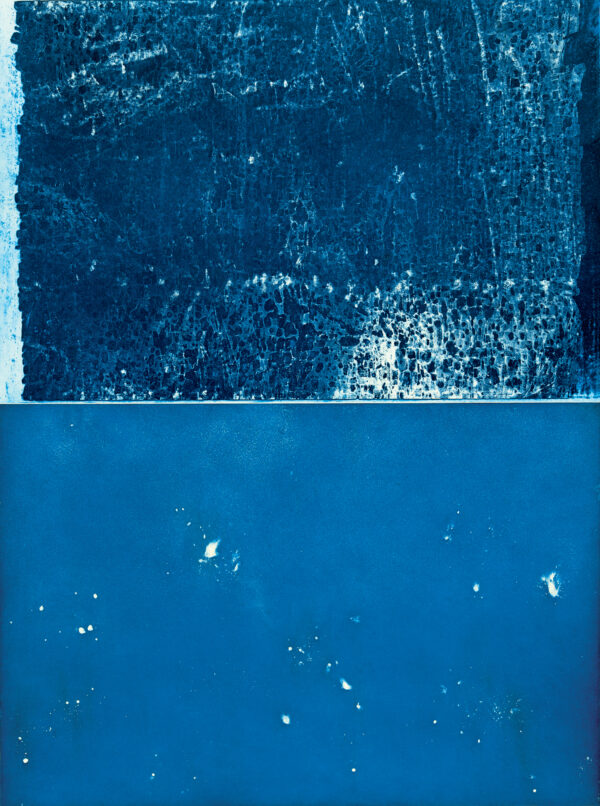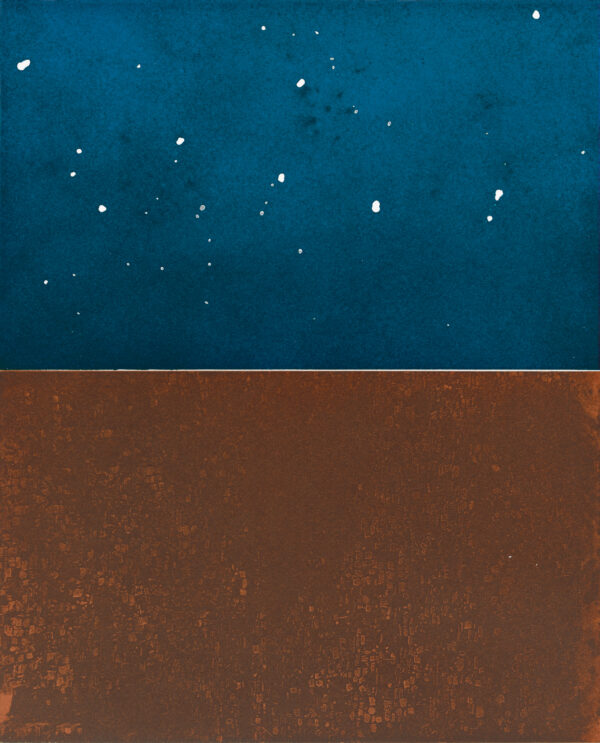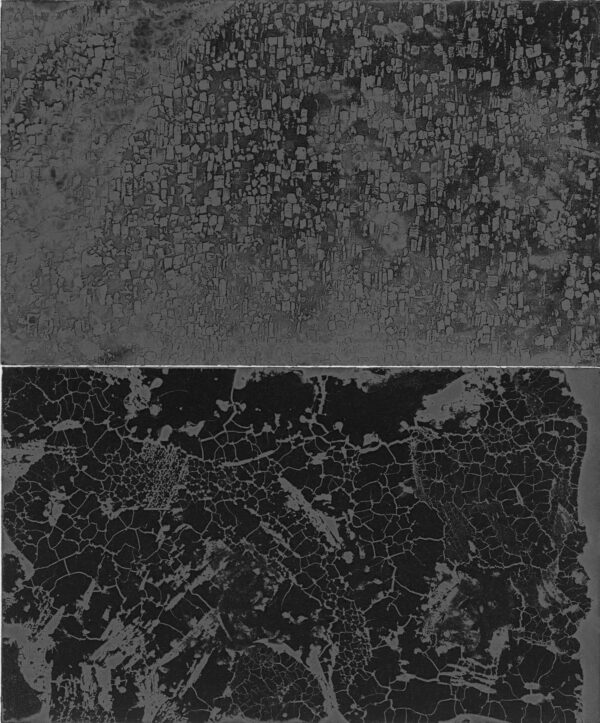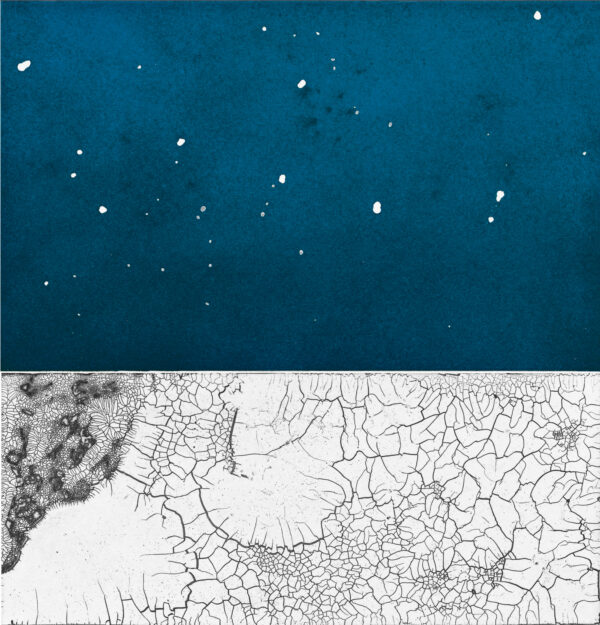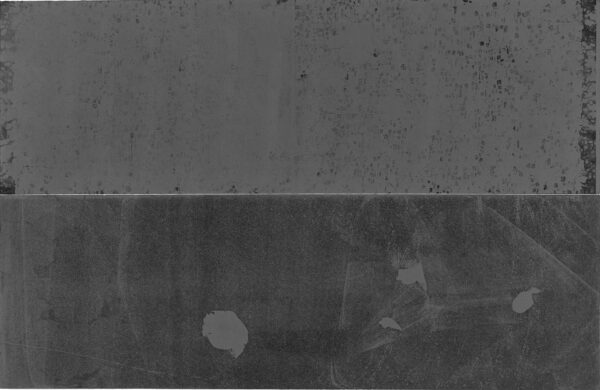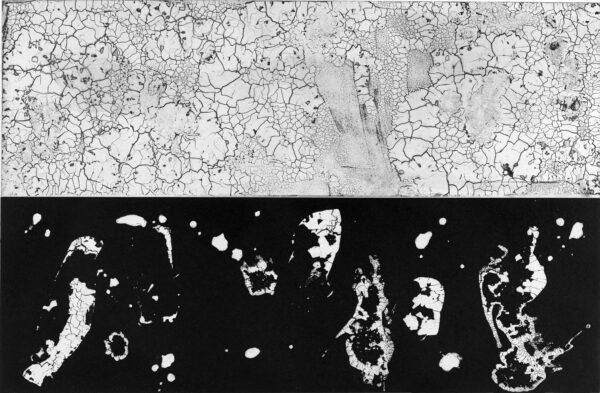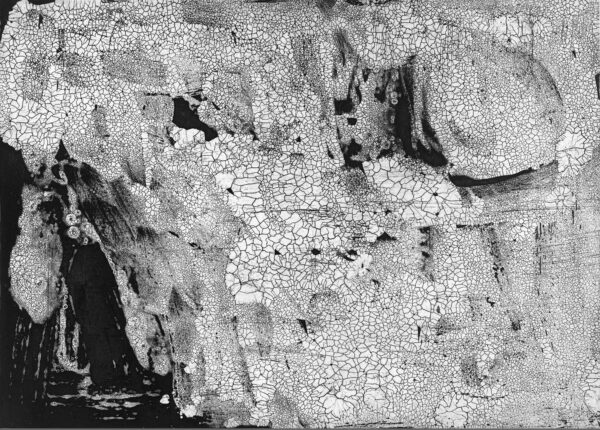“The works inspire, and I marvel at the meticulous craft that organizes chaos into beauty,” wrote Allen S. Weiss in Existed: Leonardo Drew (published by the Blaffer Gallery, the Art Museum of the University of Houston). The book accompanied the 2009 first American survey of the artist’s work. Drew is lauded for his emphasis on concept, materiality, and process and often employs a formal grid as a framework for his meticulously fabricated, large-scale, sculptural installations.
Born in Tallahassee, Florida in 1961 and raised in Bridgeport, Connecticut, Drew was influenced by his early visual surroundings, in particular the city dump which occupied every view from his childhood apartment. As a boy, he spent hours culling through remnants and throw-aways discarded by others, providing a new life to many items. “It’s this metaphor and consistent weight of being which drives my work to this day,” Drew has said. “Though I do not use found objects in my work (my materials are fabricated in the studio) what has remained from my early explorations are the echoes of evolution…life, death, regeneration.” Because he arduously processes raw materials, Drew rejects the viewer expectation that his art is comprised of found detritus.
Leonardo Drew attended the Parsons School of Design in New York in 1981-82 and received a BFA from The Cooper Union for the Advancement of Science and Art in 1985. Inspired early-on by Jackson Pollock and Pablo Picasso, he traveled to Europe in 1983 and encountered art by Joseph Beuys, Anselm Kiefer, and artists associated with the Arte Povera movement. This solidified Drew’s deep appreciation for materials and their cultural significance.
Drew’s solo exhibition at the Thread Waxing Space, New York, in 1992 marked a transition in his art that resulted in a dramatic shift to epic scale and the inclusion of formal metaphors. For example, a work, titled Number 24, is twenty feet wide and consists of densely stacked wooden slats of various lengths with rusted and bent nails protruding and loose cotton fibers spilling out of various crevices. This transition in the artist’s work came after he took a trip to Gorée Island in Africa and was deeply affected by the history of the land: for over three centuries, it served as a central trading post for the slave trade where over twenty million slaves passed through on their way to the Americas. After his trip, Drew began employing cotton as a dominant theme in his work. Eleanor Heartney, in a review of the exhibition, noted that Drew “performed a delicate balancing act” where “familiar Post-Minimal contrasts between softness and hardness or randomness and order become metaphors for deeper contradictions between freedom and confinement, transition and decay.”
Through Drew’s use of natural materials, his many enormous sculptures utilize the expanse of space and spatial dynamics, making a substantial impact on viewers. City in the Grass, Drew’s first major outdoor sculpture, was commissioned by the Madison Square Park Conservancy in 2019 and was installed in the park from June to December of that year. Sprawling at more than 100 feet by 30 feet, the abstract cityscape features topographical wooden blocks, sixteen-feet tall pillars, and curved aluminum pieces painted like Persian carpets. The sculpture then traveled to the North Carolina Museum of Art in conjunction with a solo exhibition, Leonardo Drew: Making Chaos Legible, in February of 2020. In 2019, the San Francisco Arts Commission commissioned a sculpture by Drew for the San Francisco Airport as part of its public arts program; the piece, Number 69S , mixed media sculptures, is in the Harvey Milk Terminal 1, installed on the bulkhead adjacent to Gate B9. His striking installation Number 197 was on view in the M.H. de Young Museum’s Wilsey Court, the museum’s atrium, in 2017.
Drew has exhibited nationally and internationally, and his work is in the permanent collections of the Smithsonian Institution’s Hirshhorn Museum and Sculpture Garden in Washington, D.C.; the Metropolitan Museum of Art in New York; the Solomon R. Guggenheim Museum in New York; the Caldic Collectie in Rotterdam, The Netherlands, among others. Drew made prints at Crown Point Press in 2015 for the first time where he produced eleven etchings, which were included in a solo exhibition at the Crown Point Gallery, San Francisco, in Spring 2016. He currently lives and works in Brooklyn and is represented by Galerie Lelong & Co. in New York City and Anthony Meier Fine Arts, in San Francisco.
-Katharine Fulton-Peebles, Crown Point Press
